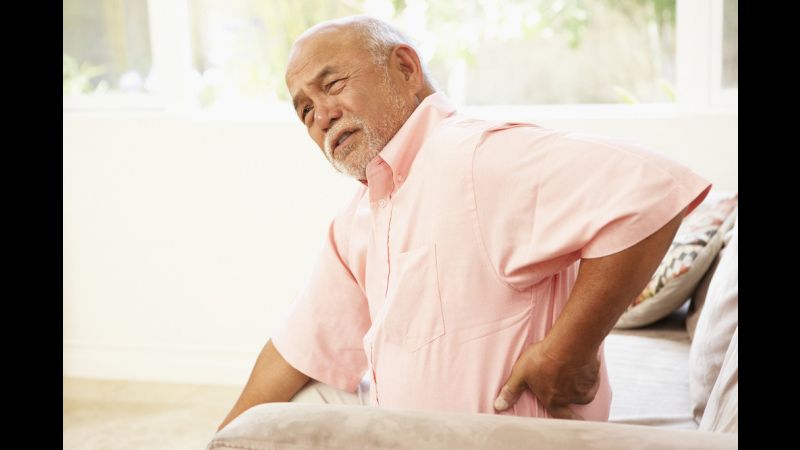It’s not uncommon to experience back pain or back problems as we age. According to SpinalDoc.com, “in a condition often referred to as the Degenerative (or "Aging") Spine, the gelatin-like centers of your discs begin to dry out, causing them to become compressed or "flattened". This, in turn, causes the vertebrae to ‘settle.’ It’s one of the reasons most people actually become shorter as they grow older.” In order to ward off an Aging Spine, it’s important to follow these 5 tips to help build your back strength:
- Posture is key. Growing up, we all experienced having our mother yell at us to “sit up straight!” and as we age, her words ring true. Sitting up straight--with your shoulders back and your core engaged--can make a huge difference in the way that you feel about your body as you age.
- Exercise in a chair. It might seem counter-intuitive to stay seated in order to get a good workout, but there are many good back-strengthening exercises you can do in a chair. We found this video that demonstrates some great seated exercises: Seated Exercises for Seniors
- Practice more yoga. Yoga ranges in levels of intensity and gentle yoga is the best for beginners. When you don’t stretch regularly, your lower back and legs become tight, which can limit your mobility. Gentle yoga classes will often include special props that help you stretch your entire body. Stretching might seem silly, but it can significantly increase your flexibility, mobility and strength.
- Don’t underestimate the power of core strength. If your core isn’t as strong as it should be, your body ends up transferring it’s efforts to your lower back, which can lead to ongoing back problems. Building up your core strength is important and can be done in just 12 minutes everyday. If you don’t have exercises that you are already familiar with, this instruction video provides you with everything you might need: Building Core Strength in 12 Minutes
- Stop smoking. If you are a smoker, I’m sure that you’ve heard this one a lot. But smoking can actually increase your risk of back pain and degenerative disc disease by 80 percent. "There’s good evidence that the blood supply to the disks in your spine is marginal, and that at about the age of 20, it diminishes dramatically just because of nature’s design," said Dr. Edward N. Hanley, chairman of orthopedic surgery at the Carolinas Medical Center. "So you’re living with a fragile nutritional environment anyway, and if you do anything to decrease that, you end up with poor nutrient supply to the disks in your back. In essence, it’s the same as having poor blood supply to your heart, which results in a heart attack. Controlling blood pressure, decreasing fat in your diet and not smoking can all decrease one’s overall risk of getting back pain significantly.”

